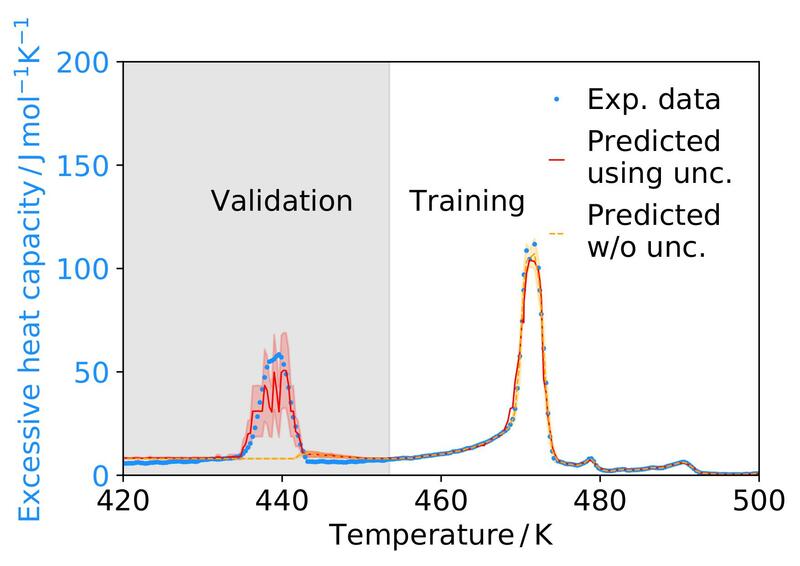Research Highlights
Unveil the unseen: exploit information hidden in noise
We develop a computer program that looks for patterns in data. These patterns are difficult to notice because of the noise. However, our program utilizes the noise to see these patterns in greater detail. We apply the program to predict two phenomena in Physics.

Noise and uncertainty are usually the enemy of machine learning, noise in training data leads to uncertainty and inaccuracy in the predictions. However, we develop a machine learning architecture that extracts crucial information out of the noise itself to improve the predictions. The phenomenology computes and then utilizes uncertainty in one target variable to predict a second target variable. We apply this formalism to PbZr0.7Sn0.3O3 crystal, using the uncertainty in dielectric constant to extrapolate heat capacity, correctly predicting a phase transition that otherwise cannot be extrapolated. For the second example – single-particle diffraction of droplets – we utilize the particle count together with its uncertainty to extrapolate the ground truth diffraction amplitude, delivering better predictions than when we utilize only the particle count.
Our generic formalism enables the exploitation of uncertainty in machine learning, which has a broad range of applications in the physical sciences and beyond. For example, the formalism can utilize the noise in the images of concrete to predict its physical properties. Another exemplar application is to utilize the information in genetic chaos for early cancer detection. Furthermore, there are many other fields, including autonomous vehicles, additive manufacturing, and information engineering, where the information embedded in noise can be exploited to accelerate development, understanding, and impact.
Unveil the unseen: Exploit information hidden in noise
Bahdan Zviazhynski and Gareth Conduit, Applied Intelligence (2022)